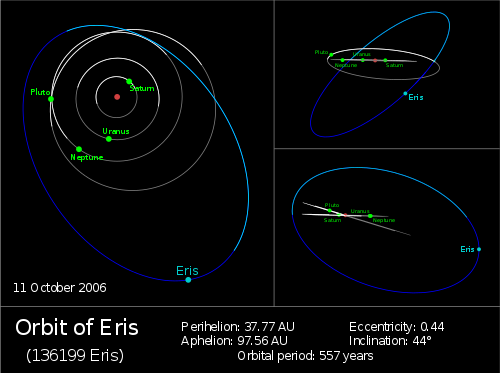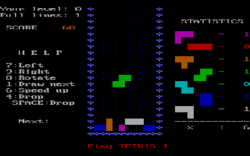Metallic hydrogen is a state of hydrogen which results when it is sufficiently compressed and undergoes a phase transition; it is an example of degenerate matter. Solid metallic hydrogen is predicted to consist of a crystal lattice of hydrogen nuclei (namely, protons), with a spacing which is significantly smaller than the Bohr radius. Indeed, the spacing is more comparable with the de Broglie wavelength of the electron. The electrons are unbound and behave like the conduction electrons in a metal. In liquid metallic hydrogen, protons do not have lattice ordering; rather, it is a liquid system of protons and electrons.
Liquid metallic hydrogen
Helium-4 is a liquid at normal pressure and temperatures near absolute zero, a consequence of its high zero-point energy (ZPE). The ZPE of protons in a dense state is also high, and a decline in the ordering energy (relative to the ZPE) is expected at high pressures. Arguments have been advanced by Neil Ashcroft and others that there is a melting point maximum in compressed hydrogen, but also that there may be a range of densities (at pressures around 400 GPa) where hydrogen may be a liquid metal, even at low temperatures.
Astrophysics
Metallic hydrogen is thought to be present in large amounts in the gravitationally compressed interiors of Jupiter, Saturn, and some of the newly discovered extrasolar planets. Because previous predictions of the nature of those interiors had taken for granted metallization at a higher pressure than the one at which we now know it to happen, those predictions must now be adjusted. The new data indicate much more metallic hydrogen must exist inside Jupiter than previously thought, that it comes closer to the surface, and that therefore, Jupiter's tremendous magnetic field, the strongest of any planet in the solar system is, in turn, produced closer to the surface.
Liquid metallic hydrogen
Helium-4 is a liquid at normal pressure and temperatures near absolute zero, a consequence of its high zero-point energy (ZPE). The ZPE of protons in a dense state is also high, and a decline in the ordering energy (relative to the ZPE) is expected at high pressures. Arguments have been advanced by Neil Ashcroft and others that there is a melting point maximum in compressed hydrogen, but also that there may be a range of densities (at pressures around 400 GPa) where hydrogen may be a liquid metal, even at low temperatures.
Astrophysics
Metallic hydrogen is thought to be present in large amounts in the gravitationally compressed interiors of Jupiter, Saturn, and some of the newly discovered extrasolar planets. Because previous predictions of the nature of those interiors had taken for granted metallization at a higher pressure than the one at which we now know it to happen, those predictions must now be adjusted. The new data indicate much more metallic hydrogen must exist inside Jupiter than previously thought, that it comes closer to the surface, and that therefore, Jupiter's tremendous magnetic field, the strongest of any planet in the solar system is, in turn, produced closer to the surface.













